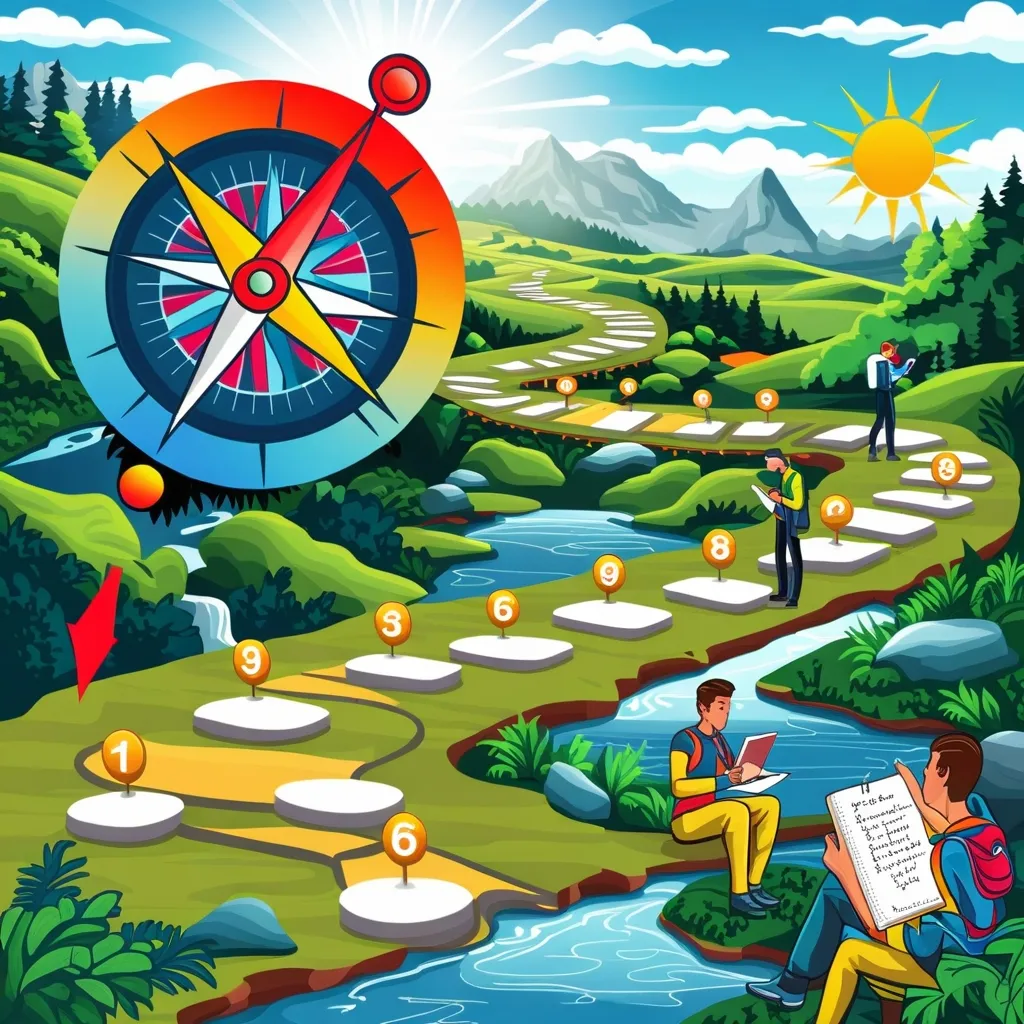When it comes to crafting business strategies, the traditional methods often rely heavily on analytical thinking, spreadsheets, and PowerPoint presentations. However, what if you could tap into a more holistic and innovative approach? Imagine using all your senses to create a rich, multisensory map of your business plan. This concept, which we can call “synesthetic strategy mapping,” transforms the way you develop and execute your business strategies by integrating sensory experiences.
The Power of Synesthesia
Synesthesia is a neurological phenomenon where one sense is simultaneously perceived as if by one or more additional senses. For example, some people see numbers or words in specific colors. While not everyone is a natural synesthete, the principle of associating different senses with various aspects of your strategy can be incredibly powerful.
Visualizing Your Strategy
Start by associating different colors with various components of your business plan. For instance, you might visualize market penetration as a deep blue hue, symbolizing stability and growth. Product diversification could be represented by a vibrant orange, signifying creativity and innovation. This visual approach helps you quickly identify and connect different elements of your strategy at a glance.
The Sound of Success
Sounds can also play a crucial role in your synesthetic strategy map. Imagine assigning a specific melody or tone to each strategic objective. For example, the hum of a steady drumbeat could represent consistent revenue growth, while the chime of a bell might signify the achievement of a key milestone. This auditory element adds another layer of depth to your strategy, making it more memorable and engaging.
Tactile Connections
Textures can provide a tangible connection to your strategic goals. Envision a smooth, glassy surface representing streamlined internal processes, or a rough, rocky texture symbolizing the challenges of entering a new market. By associating these textures with specific objectives, you can better understand the complexities and nuances involved.
The Taste of Innovation
Even tastes can be integrated into your strategy map. For instance, product diversification might taste like a zesty citrus blend, representing freshness and innovation. Market expansion could have the rich flavor of dark chocolate, symbolizing luxury and growth. This sensory integration can help you uncover unexpected connections and insights that might be missed through traditional planning methods.
Immersive Strategy Development
Synesthetic strategy mapping turns the process of strategy development into an immersive experience. By engaging multiple senses, you are not just analyzing data; you are experiencing your business plan in a multidimensional way. This approach can help you process complex business concepts more intuitively, leading to more innovative and holistic decisions.
Aligning Your Team
One of the key benefits of synesthetic strategy mapping is its ability to align your entire team on a shared vision. When everyone can see, hear, feel, and even taste the strategy, it becomes much clearer how each role contributes to the overall success of the organization. This alignment enhances employee engagement and cross-functional awareness, ensuring that everyone is working towards the same goals.
Practical Steps to Create Your Map
To start creating your synesthetic strategy map, begin by defining your overarching objectives. These could include financial goals, customer satisfaction targets, internal process improvements, and learning and growth initiatives. Once you have these objectives, start associating them with specific colors, sounds, textures, and tastes.
Use a visual tool like a large whiteboard or a digital canvas to lay out your map. On one side, list your key perspectives – financial, customer, internal, and learning and growth. On the other side, outline the specific objectives that tie into these perspectives. Use bold colors, shapes, and symbols to distinguish between different elements.
For example, if your financial objective is to increase revenue by 20%, you might represent this with a green arrow pointing upwards, accompanied by the sound of a rising bell curve. If your customer objective is to improve satisfaction ratings, you could use a warm yellow color and the sound of happy chatter.
Continuous Evaluation and Adjustment
Strategy mapping is not a one-time task; it is a continuous process. Regularly review and update your map to reflect changes in your business environment. Use your senses to identify areas that are not aligning with your overall strategy. For instance, if a particular objective feels rough or tastes sour, it might indicate a problem that needs addressing.
Overcoming Traditional Limitations
Traditional strategy planning often gets bogged down in detailed spreadsheets and lengthy reports. These methods can be overwhelming and may not provide the holistic view that synesthetic strategy mapping offers. By engaging multiple senses, you can cut through the noise and focus on what really matters.
Moreover, this approach helps you anticipate and react to changes in your internal and external environments more effectively. It allows you to prioritize resources and ensure that they are used efficiently, leading to better risk management and more intentional decision-making.
Enhancing Creativity and Innovation
Synesthetic strategy mapping is not just about visualization; it’s about creating a rich sensory experience that fosters creativity and innovation. By tapping into your brain’s full sensory capacity, you can uncover unique insights and connections that might have been missed through traditional methods.
For example, if you’re brainstorming new product ideas, associating different tastes or smells with potential products can help you think outside the box. A new product might taste like a refreshing mint, symbolizing coolness and innovation, or it might smell like freshly baked cookies, representing warmth and comfort.
Real-World Applications
This approach is not limited to the initial stages of strategy development; it can be applied throughout the execution phase as well. Imagine conducting meetings where each strategic objective is represented by a specific color or sound, making it easier for everyone to stay on track.
In agile strategy execution settings, synesthetic strategy mapping can be particularly useful. It helps align the entire organization around the mission, vision, and strategies, ensuring that everyone is working cohesively towards the same goals. The seven phases of strategy mapping – from mission and vision to business outcomes – can be enriched by this sensory integration, making each phase more engaging and memorable.
Conclusion
Crafting business strategies using synesthetic strategy mapping is a revolutionary approach that leverages the full potential of your senses. By associating different aspects of your strategy with specific colors, sounds, textures, and tastes, you create a rich, immersive experience that enhances your ability to understand and execute your business plan.
This method is not just about creating a visual map; it’s about engaging your entire perceptual system to make more innovative, holistic, and effective business decisions. Whether you’re a startup or an established organization, synesthetic strategy mapping can help you navigate the complexities of business planning with greater clarity and creativity. So, the next time you sit down to develop your business strategy, consider using all your senses to create a truly synesthetic strategy map.






